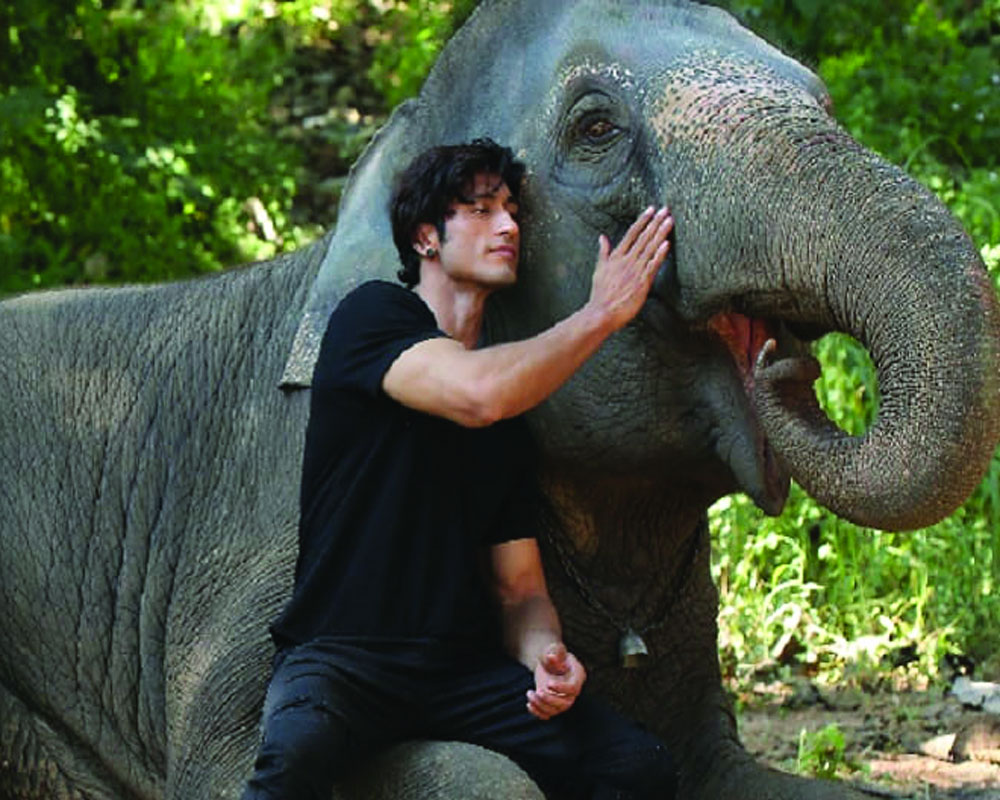According to Director Chuck Russell, “Junglee will not only make people recall their childhood fantasies centered around jungles but also renew their relationship with nature.” Every country is associated with a specific animal just like a trademark. For instance, kangaroos and Australia, bears and Russia, eagles and Germany, bulls and Spain, tigers and India, and the list goes on. Well, for director Chuck Russell, elephants have always been associated with India. His childhood has been full of elephant stories and fantasies. His house was full of artefacts and photographs from India, most of which had elements of elephants as his mother was a travel agent who adored the country.
The American director, who is known for his several genre films like The Mask, The Scorpion King, Girls Just Want to Have Fun, Arabian Nights, and many more, has grown up reading Tarzan stories and fantasising about jungles. He watched films like Flaherty’s Elephant Boy, and read Rudyar Kipling’s Toomai of the Elephants. He recalled that such films and books made him fantasize about “a child having an elephant as his best friend.”
Russell’s Junglee is the director’s first stint at creating a Hindi, Bollywood film, which not only attempts to highlight an important issue, but also completes the director’s childhood fantasies. He was surprised when he first received the call to create an Indian film. However, he said, “I am always looking forward to making something for the global audience which is not just restricted to the national viewers. And with India, came only one aspect to my mind — elephants and immense cultural beauty,” he said (laughs).
For him, it was also about defending the nature, rather than “saving it.” It was opportunity for him to “represent both man and nature together. Hence, it is a 100 per cent true Indian story, with very inspiring and irresistible characters.”
After working with legends like Dwayne Johnson and Arnold Schwarzenegger, he realised that the audience loves watching valiance, vulnerability and humour in the hero. “And Vidyut (Jammwal) was a perfect actor to show that. I just had to keep his character’s fun part intact. He, I felt, is a kind of performer whom I can bring to the global level. He is very charismatic and a brilliant marshal artist. He really inspired the characters we specifically we developed the screenplay for,” he said.
While this was his first stint at making a Bollywood film, were there certain things that challenged him during the process? He said, “Not much.” Well, not even the language barriers? He replied, “I had to understand the language but I love exploring accents and different languages. With my travel, the one thing I explore the most are the linguistic differences and how they shape the ethnicity of people. It’s fun for me. I just hear them and they somehow make sense to me, no matter how different they are. This was opportunity to learn Hindi as well. We wrote the script in English, and got them translated to take the script to the next level. Well, this was the most exciting part about the whole experience of making the film.”
However, he explained that in a way, he never really had to learn the language completely to make the film. He said, “Since I knew all the dialogues in English, so whenever a particular scene was being shot, I knew what was going on (laughs). And the crew was bilingual, so I never felt one-sided in terms of the language.”
Talking about the differences between Hollywood and Bollywood films that he spot during the shoot, he laughingly said, “If this were a Hollywood film, there would be CGI (Clinton Global Initiative) elephants, or some Western actor saving them in India. If it would have been in English, it wouldn’t have been as entertaining.”
He explained that a film, shot with animals, seems to convey to people that they have been brought from a certain circus or conservation organisation. However, here, they used real elephants from a natural habitat of elephants in Thailand, “and not those trained elephants from some circus. We didn’t get any Hollywood elephant trainers, but just the care takers animal behaviourists. We actually learned the animal behaviour. We slept and woke according to their timings and observed them.And shot according to their moods, didn’t make them change their schedules at all.”
Well, this was also one of Russell’s personal accomplishments — capturing elephants in their natural habitats, and giving the people a story that they could take home. “It conveys a message. People hardly pay attention to what the nature has to offer. When you go on a holiday, listen to the whistling trees, adore the fallen, colourful leaves, look at how different kinds of species communicate with each other. Sit and observe. This film will make them want to relook nature, and as well highlight an important issue of conservation of such a beautiful creature in India. Why poach elephants for ivory? I am proud that I’m best friends with an elephant rather than being proud of killing it and getting its tusk hung on my wall,” he said.
This film, he said, is much beyond the ones in which elephants are used as mere props or for some funny element. “I wanted to capture personal moments with them rather than just using them as objects to pose with,” he said.
Photo: Pankaj Kumar
Writer: Chahak Mittal
Courtesy: Pioneer








 OpinionExpress.In
OpinionExpress.In















Comments (0)